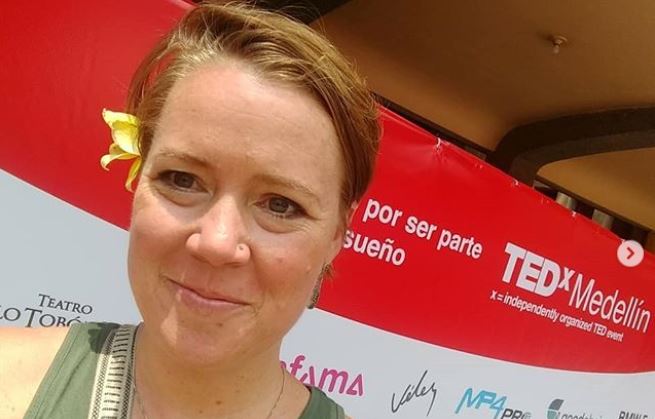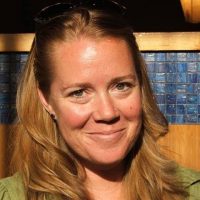Have you considered a program of study, only to be held back by time constraints or financial concerns?
Setting a curiosity budget for 2020 is your first step to getting excited about learning again. Invest time (and less money than you think) in yourself and in your future.
You may have heard of autodidacts or non-traditional forms of education, but now you can you tailor a program to fit your own unique needs and help you learn about something that you’re passionate about. You can learn that skill you’ve been dreaming of mastering or gain a deeper understanding of a subject—without taking out a loan or committing years of your life to a degree program.
The journey that led me to a curiosity budget:
Several years ago, while contemplating the decision of where to take my life, I considered going back to grad school. To study what? I didn’t know. I thought it couldn’t hurt to have another piece of paper that shows I know “stuff,” and add a few more letters after my name. Several weeks of research, investigation, and financial budgeting clarified my decision-making process. I came to realize that there wasn’t a program that I was passionate, or even curious enough about, to commit to and none that warranted the price. Despite not finding a specific program that sparked my interest, I was still eager to learn.
Education versus Learning.
As a former educator, I have come to form an understanding of the distinction between education in its traditional sense and learning for the fun of it. There are two main differences: content and engagement. Since standardized education was first implemented, universal public education has dictated what we need to learn. Although the world has drastically changed, public education has largely remained the same. Research shows that when students are allowed to pursue their interests without the imposed structure of education, their engagement and focus are both exponentially improved. For some, it is an insignificant difference, but in many cases the gap is notable.
After a diverse set of experiences both as a student and as a teacher, I had become somewhat disillusioned with the dogma of education. In college, my general desire to learn (read: graduate) had been enough to get me through all of my courses. But, I wasn’t in college anymore. I was a single mother, caring for my newborn daughter. As I sifted through the options before me, I began to realize that it didn’t make sense to haphazardly throw myself into a multiple-year commitment to a rigorous program of study, especially if I couldn’t find a particular program I felt passionate about.
To Ph.D. or to not Ph.D. (that was the question).
After much deliberation, I decided to take my education into my own hands. Ever since then, I have been in charge of my own learning. Instead of spending thousands of dollars to go back to school, I’ve allocated money each year (the exact amount is really a personal decision) to learn about and explore whatever piques my interest.
Where my curiosity budget goes:
Sometimes, my budget is spent on books. Other times, it goes to conferences or online classes. I have spent money on workshops and speaking opportunities. No matter how many books I read on public speaking, the most powerful learning experience is getting up on stage and doing it.
With each new book and with each new encounter, I find a potential path, a thread of curiosity that I explore and tug on. I call the money set aside for my learning endeavors my curiosity budget. Each year, I set aside funds for my curiosity budget so that I no longer have to grapple with the expense of something. “Can I afford that book or that experience?” Absolutely! It is my obligation to spend this money. It is my commitment to myself.
My curiosity budget has funded more than 150 books (in the past four years), dozens of courses, speaking at three international conferences, and research for a book I have written. Earning a Ph.D. would have put me through similar trials, perhaps. It also certainly would have cost significantly more and not have allowed for the flexibility that I have enjoyed.
After establishing my curiosity budget, it took me a while to get into the swing of things, which is to be expected. After nearly a year, I realized some organization would be key in order to be successful.
Here’s what I learned:
An essential element of learning on your own is to not just read, but rather, to actively read. It’s imperative to deeply engage with the material. This type of active reading is like having a dialogue with the text: reading, asking questions, extrapolating meaning, and taking notes. The process needs to be intentional and studious. If I don’t truly engage with what I’m reading, I can skim through an entire book and remember nothing. What is the point of that?
Depending on what you are reading and what you intend to gain from it, you may want to annotate the text, take notes, copy favorite quotes, or write a summary of key ideas from the text. For my purposes, I keep a reading log and write a book review style annotated bibliography to highlight my main learnings from each text. It makes it easier to go back and remember what I’ve read. It also reinforces my learning. Once a teacher, always a teacher.
If you love books, like me:
I consider myself a bit old-school, and a self-proclaimed bibliophile, in that I strongly prefer holding a physical book in my hands, hearing the rustle of the pages, taking notes in the margins. However, as a working, single parent, I’ve come to embrace the convenience that technology provides. Listening to audiobooks has proven to be an effective way for me to reach my learning goals, while still meeting all of my personal and family’s needs. I can do dishes or laundry, go for a walk, or cook while I listen to a book. Depending on my learning goals, some books are still better learning tools when I have a physical copy. You can figure out the balance and method that works best for you.
CEOs and thought leaders are known for reading upwards of 50 books each year whereas the “average American” reads only two books in the same amount of time. Admittedly, books are an efficient way to consume concentrated learning (authors write the cumulation of their knowledge, sometimes a lifetime’s worth and coalesce it into 250 pages. You can benefit from each author’s lifetime of learning and insight).
Figuring out what works best for you.
One of the advantages of traditional forms of education is the constant feedback you receive as a student. Your mastery of each concept is analyzed and turned into a concrete percentage or letter-grade that reflects your instructor’s perception of your level of understanding.
The number and accessibility of online classes have exploded. So much free content with interactive capacity to measure your progress is now available. Mastermind, Mindvalley, Udemy, EdX, and many more offer incredible content at varying price points. I have taken courses with each of them and learned fascinating things (and will continue to do so!). If you prefer to have an intimate sit-down with Shonda Rimes to learn screenwriting, or Gordon Ramsey to learn to cook, those video courses might be more up your alley.
But, what about those of us who are curled up reading books and out in the wider world exploring our individual interests? Where does feedback come into play for those of us studying using our curiosity budget and creativity?
In my experience, the unobservable improvements start to be noticeable further down the road. Keep records of what you are reading and studying. Take notes in the margins or in a notebook. Talk to people about what you are learning because that engagement deepens the connections and enhances your memory and integration of concepts. Even better, find a few other curious folks and start a club to share your learning and geek-out together.
Start your curiosity budget with these questions:
- What do you want to learn about in 2020?
- What curiosity will you pursue?
- What topic or skill do you want to improve in the coming months and years?
- How much money can you set aside for your curiosity budget? And how much energy/time can you devote to this endeavor?
- Will you benefit from structure and accountability or are you better on your own?
- Who can you call into your curiosity club?
- Who or how will you be when you have completed this learning process? Get clear on your vision.
Learning can be challenging to those of us who like to be good at things from the very beginning and shudder at the thought of struggle (which most of us do). Keep in mind, struggling is how we learn, and in fact, that is the very definition of learning. If you were already good at it or knowledgeable, you wouldn’t need to learn. So, struggle and discomfort are indicators of growth. Don’t let them be deterrents.
Being really crap at something when you start…is perfect. Gradually make insignificant improvements over time. Celebrate the small shifts. Celebrate the struggle. It sounds crazy, I know. Until after a while, unobservable improvements yield that you are better, or even good, at something. Can you imagine?
Hang on to the vision of your endpoint. The goal, the skill you want to achieve and integrate. Gently lean in, supported by your curiosity budget and a club of folks who can encourage, commiserate, and support you along the way.
Note: Share in the comments what you want to pursue. Let us know when you are starting and if you encounter stumbling blocks. Let us be your club to support you and celebrate. Happiest of New Year’s to you.
~


 Share on bsky
Share on bsky





Read 31 comments and reply